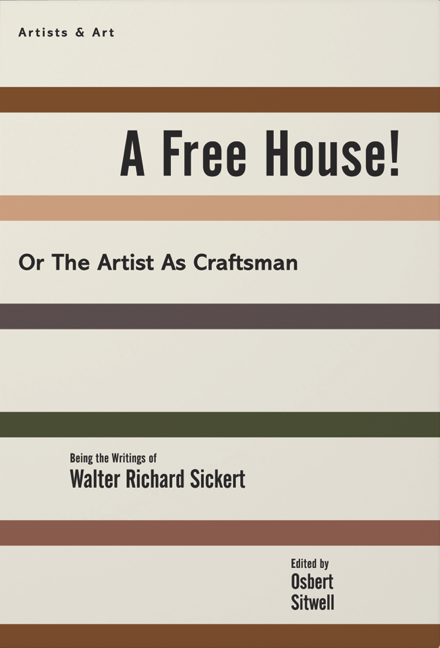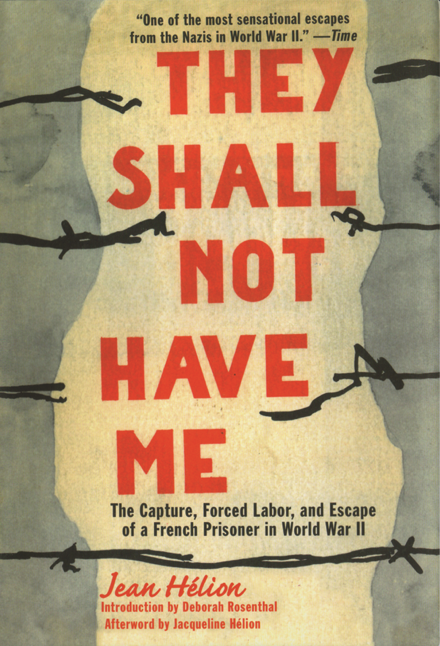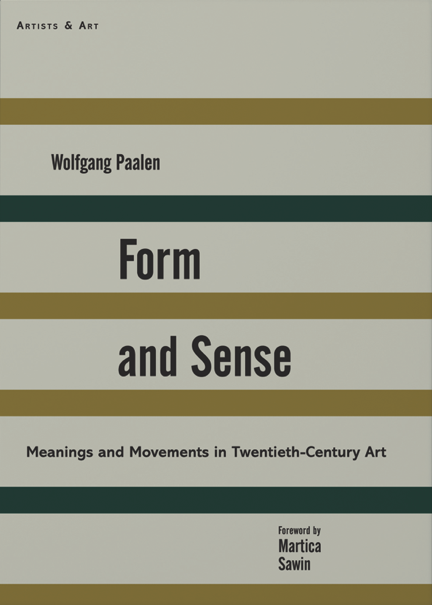Like every other artist and writer on art I know, I have a precious collection of crumbling, yellowing old books and magazines about art on my bookshelves. And like my friends, I've hoped to see these talismanic texts back in print. A year ago, I started the Artists & Art series for Arcade Publishing in New York -- to reissue books by and about art and artists that deserve to be in print again and to publish some texts that had never been collected before. With Walter Richard Sickert's A Free House! Or the Artist As Craftsman, just out, the series has its second publication this year.

A Free House! Or the Artist As Craftsman was published in 2012.
What you read when you're young often has a magical lifelong hold on you -- and the first book I thought of for this series was one that was passed from young painter to young painter in a kind of artistic samizdat, some 35 years ago when we were all getting MFAs. Jean Hélion's They Shall Not Have Me, which came out this year from Arcade, is a thrilling account of his experiences as a POW in Nazi prison camps in World War II. A book with the absence of freedom at its core -- about a time without art -- it resonates today, with young artists and everyone interested in art and politics, as it did when it was an American bestseller in 1943. It's a "a one-of-a-kind classic," according to John Ashbery, a longtime fan of the book and the artist.

They Shall Not Have Me was published in 2012.
Readers who meet Walter Richard Sickert in our new edition of his writings in A Free House! may feel they are discovering an enormous critical mind they hadn't known before. Sickert has his place as a crucial artist -- a real painter's painter -- but he was also a riot of a writer. An irascible, iconoclastic, funny, and razor-sharp thinker, he spoke his own mind about his contemporaries, his masters, and the art of past and present, in exhibition reviews and articles for literary-art magazines and exhibition catalogues. It is a great moment to turn to a dyed-in-the-wool maverick who at the same time championed the value of the traditional craft of painting.
A Free House! can be read from beginning to end, or dipped into. No matter which, when you open this book, Sickert's personality fairly roars back at you. His long painting life was filled with leading cultural figures as well as rising young artists. The book is chockablock with names of artists we know -- Whistler, Manet, Pissarro, Gauguin, as well as many, many others Sickert taught, knew, and wrote about. His world was a richly literary milieu as well, and the new edition brings back into print a real literary find -- the belle-lettrist Osbert Sitwell's introductory memoir of the artist, peopled with Arnold Bennett, Aldous Huxley, Oscar Wilde, and Frank Harris, among others.
The book's title brings us to the urban world of London, the city that Sickert celebrated in paint. "Tied houses" were pubs selling only one brewer's products, while a "free house" could have the brews of many. Of course it's Sickert himself who is the free house of this book. He swings back and forth in a dizzying but constantly fascinating tour-de-force of critical scrutiny. If we may find much to disagree with -- his characterization of Cézanne as a "great failure" for instance -- his particular thumbs-up or thumbs-down is finally less important than the looking and responding to works of art that are the heart of his writing. And that is what makes A Free House! worth reading again.
Next in print are two books by the art historian Erwin Rosenthal. The Changing Concept of Reality in Art and Contemporary Art in the Light of History are short books with a broad and assured range. Rosenthal, a debonair and moving writer, mixes it all up in a sort of marvelous monologue taking us from Spanish illuminated manuscripts of the l0th century to Bridget Riley and Mallarmé.
And in the spring, another maverick, the artist and writer Wolfgang Paalen: we'll publish his Form and Sense, chosen in 1945 by Robert Motherwell as the first in his Problems of Contemporary Art series for Wittenborn. A somewhat mysterious figure, Paalen is brought to life and placed in the '40s scene by the Surrealism scholar Martica Sawin's new introduction.

Form and Sense will be published in 2013.
And finally, next year the series will publish Jean Hélion's English-language essays on art, never collected before in book form.
The Artists & Art series is eclectic, freewheeling, and -- a bit like Sickert's free house -- belongs to no ideology or ism. The books are ones that I know artists are eager to have in their hands again, but that have as much to say to a general audience that is curious about the enduring life of art.
All book jackets designed by Elena Giavaldi